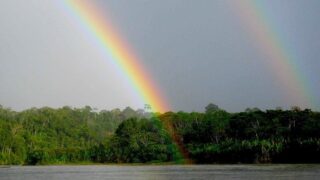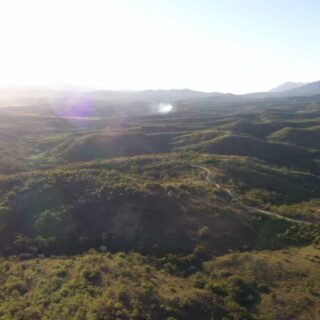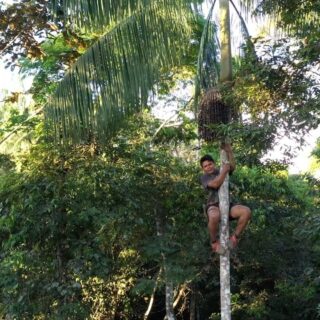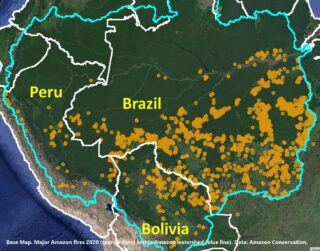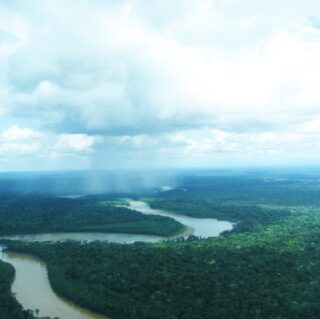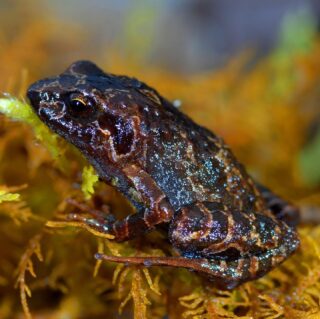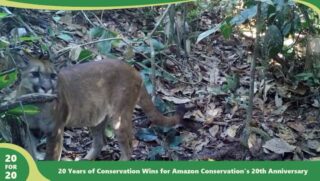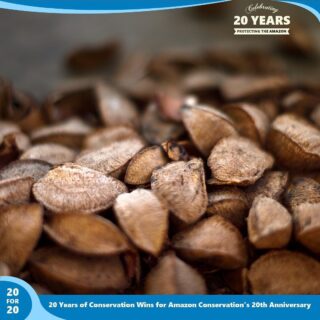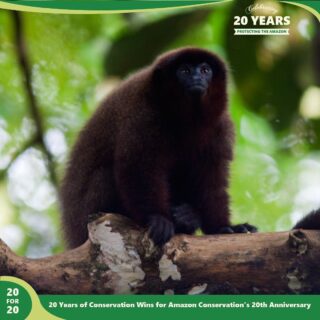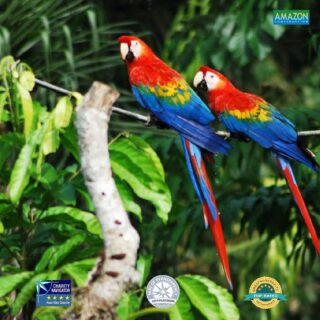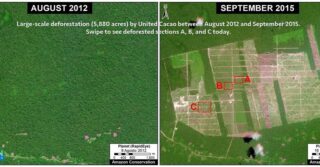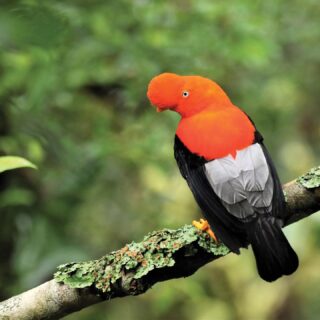 Amazon Conservation’s Wayqecha Research Station and Conservation Hub, the only cloud forest research station in Peru, officially opened its doors in 2006. Located at 2,900 m of elevation in the cloud forest region of Cusco and just 175 km from our Los Amigos Conservation Hub in the Amazonian lowlands, these research sites together provide a full panorama of the biodiversity and climate changes in the Andes-Amazon region.
Amazon Conservation’s Wayqecha Research Station and Conservation Hub, the only cloud forest research station in Peru, officially opened its doors in 2006. Located at 2,900 m of elevation in the cloud forest region of Cusco and just 175 km from our Los Amigos Conservation Hub in the Amazonian lowlands, these research sites together provide a full panorama of the biodiversity and climate changes in the Andes-Amazon region.
Wayqecha Research Station protects the cloud forest’s biodiversity and facilitates research that leads to a better understanding of this ecosystem. Cloud forests receive hundreds of inches of rain every year and their trees, mosses and soil work as giant sponges capturing the abundant rainfall and then releasing it slowly into a network of small streams and creeks that represent the smallest tributaries of the vast Amazon drainage.
Cloud forests are of critical conservation value for many reasons, including containing a vast storehouse of species, many of them narrowly endemic, and also serve as natural corridors for plant and animal species pushed uphill by global warming.
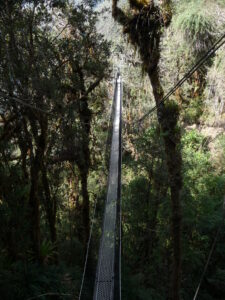 Additionally, three years after opening, we added the first-ever canopy walkway in an Amazonian highland cloud forest. The canopy walkway provides access to the upper parts of the forest, which is where a lot of natural activity is, including an amazing diversity of bromeliad, orchids, birds and butterflies. It consists of four aluminum towers connected by a 146-meter-long network of suspension bridges that pass under, through, and above the forest canopy. Another important feature of the canopy walkway is a rigid truss bridge through a small rock canyon that leads to the base of a waterfall passing through an area with a completely distinct climate and Cloud Forest Canopy. Other bridges lead visitors across forested slopes that cover eight distinct eco-zones, providing a view from more than 10,000 feet in elevation down to the Amazon basin.
Additionally, three years after opening, we added the first-ever canopy walkway in an Amazonian highland cloud forest. The canopy walkway provides access to the upper parts of the forest, which is where a lot of natural activity is, including an amazing diversity of bromeliad, orchids, birds and butterflies. It consists of four aluminum towers connected by a 146-meter-long network of suspension bridges that pass under, through, and above the forest canopy. Another important feature of the canopy walkway is a rigid truss bridge through a small rock canyon that leads to the base of a waterfall passing through an area with a completely distinct climate and Cloud Forest Canopy. Other bridges lead visitors across forested slopes that cover eight distinct eco-zones, providing a view from more than 10,000 feet in elevation down to the Amazon basin.
This is part of a series commemorating our 20th anniversary protecting the Amazon. We’re celebrating this milestone with a look back at our 20 biggest conservation wins over the past 20 years. Click here to support protected areas and research stations around the Amazon.

 November–January, Wayqecha is a magnificent wonder of flowering plants, curious animals, and diverse birds seldom seen at other times of year. Story by Wayqecha intern Laura Morales.
November–January, Wayqecha is a magnificent wonder of flowering plants, curious animals, and diverse birds seldom seen at other times of year. Story by Wayqecha intern Laura Morales.
 full of bristles as to strike fear into the heart of the most experienced biologist lest he put his hand on one accidentally. And of course the myriad orchids in Wayqecha begin to bloom more abundantly at this time of year.
full of bristles as to strike fear into the heart of the most experienced biologist lest he put his hand on one accidentally. And of course the myriad orchids in Wayqecha begin to bloom more abundantly at this time of year. ACA has been working hard to ensure that students living near Manu National Park learn how to protect the majestic cloud forest in their back yard. The cloud forests where the eastern slopes of the Andes meet the Amazonian lowlands constitute one of the world’s greatest conservation priorities, and with the support of the Sea World & Busch Gardens Conservation Fund, we’re doing our best to protect this area.
ACA has been working hard to ensure that students living near Manu National Park learn how to protect the majestic cloud forest in their back yard. The cloud forests where the eastern slopes of the Andes meet the Amazonian lowlands constitute one of the world’s greatest conservation priorities, and with the support of the Sea World & Busch Gardens Conservation Fund, we’re doing our best to protect this area. Over 300 students submitted
Over 300 students submitted  As ACA’s premier Amazonian biodiversity research station, CICRA, continues to grow, ACA’s new Wayqechas (why-key-chas) Cloud Forest Research Station is under construction at full speed. Jorge Herrera, who successfully administered CICRA in previous years, is now taking the reins as the new administrator at Wayqechas. He plans to have the first three cabins available this April 2006. Three teams are working busily on the cabins, competing among themselves to deliver the best product. The station will receive its first visitors in April.
As ACA’s premier Amazonian biodiversity research station, CICRA, continues to grow, ACA’s new Wayqechas (why-key-chas) Cloud Forest Research Station is under construction at full speed. Jorge Herrera, who successfully administered CICRA in previous years, is now taking the reins as the new administrator at Wayqechas. He plans to have the first three cabins available this April 2006. Three teams are working busily on the cabins, competing among themselves to deliver the best product. The station will receive its first visitors in April.